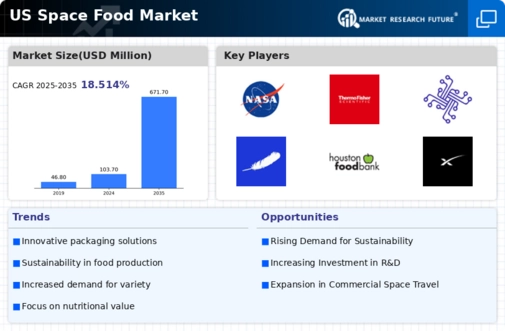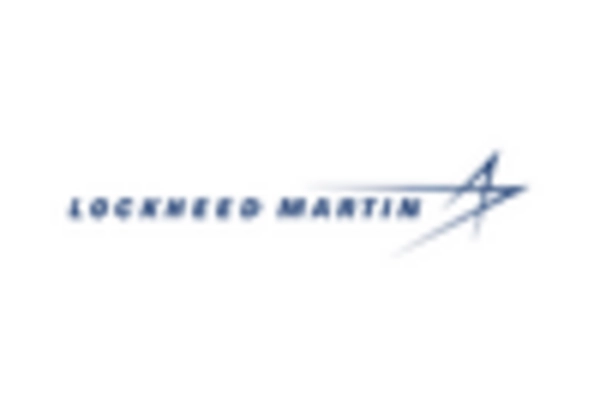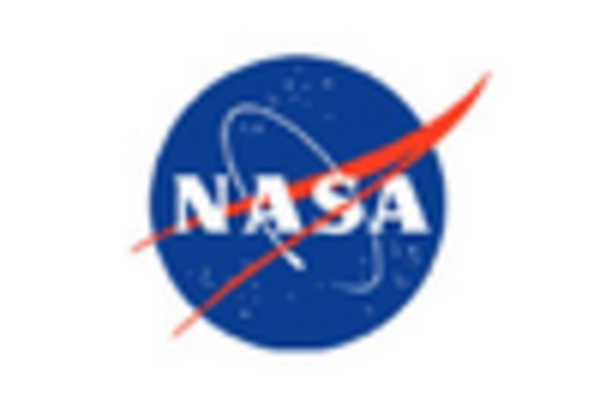Advancements in Food Technology
The space food market is benefiting from advancements in food technology, which are crucial for developing innovative solutions tailored for space environments. Techniques such as 3D food printing and nutrient encapsulation are being explored to create meals that are not only palatable but also nutritionally balanced. These technologies could revolutionize how food is prepared and consumed in space, allowing for greater customization based on individual dietary needs. The potential for these advancements to enhance the overall dining experience for astronauts is significant, and as research continues, the market may see a rise in the adoption of such technologies. This could lead to a more dynamic and varied food landscape in space, ultimately contributing to the market's growth.
Focus on Food Safety and Quality
The space food market places a strong emphasis on food safety and quality, which is paramount for the health and well-being of astronauts. Stringent regulations and standards are in place to ensure that all food products are safe for consumption in space. This focus on safety has led to the development of advanced packaging technologies and preservation methods that extend shelf life while maintaining nutritional value. The market is likely to see an increase in the adoption of these technologies, as they not only enhance food safety but also improve the overall quality of space food. As a result, companies that prioritize these aspects may gain a competitive edge, potentially capturing a larger share of the market, which is projected to reach $1 billion by 2030.
Emerging Trends in Plant-Based Foods
The space food market is increasingly incorporating plant-based foods into its offerings, reflecting a broader trend towards healthier and more sustainable eating habits. As astronauts seek diverse and nutritious meal options, plant-based ingredients are being explored for their potential benefits in space. These foods not only provide essential nutrients but also align with sustainability goals, as they typically require fewer resources to produce compared to animal-based products. The market for plant-based space food is expected to grow, with estimates suggesting a potential increase of 20% in product offerings over the next few years. This shift may also appeal to a growing consumer base interested in plant-based diets, thereby expanding the market's reach beyond just space missions.
Growing Demand for Ready-to-Eat Meals
The space food market is witnessing a growing demand for ready-to-eat meals, driven by the need for convenience and efficiency in space missions. Astronauts require meals that are not only nutritious but also easy to prepare and consume in a microgravity environment. This trend is reflected in the increasing variety of pre-packaged meals designed specifically for space travel, which are often vacuum-sealed and require minimal preparation. The market for these ready-to-eat meals is expected to expand, with projections indicating a potential increase in sales by 15% over the next five years. This demand is further fueled by the rising interest in long-duration missions, such as those planned for Mars, where meal preparation will need to be streamlined to ensure optimal performance and health of the crew.
Increased Investment in Space Missions
The space food market is experiencing a surge in investment due to the increasing number of space missions planned by both governmental and private entities. NASA's Artemis program, which aims to return humans to the Moon by 2024, has prompted a need for innovative food solutions that can sustain astronauts during extended missions. Additionally, private companies like SpaceX and Blue Origin are also contributing to this trend, as they prepare for missions to Mars and beyond. This influx of funding is likely to drive research and development in the space food market, leading to the creation of more advanced food products that meet the unique challenges of space travel. As a result, the market is projected to grow significantly, with estimates suggesting a compound annual growth rate (CAGR) of around 7% over the next decade.

















Leave a Comment